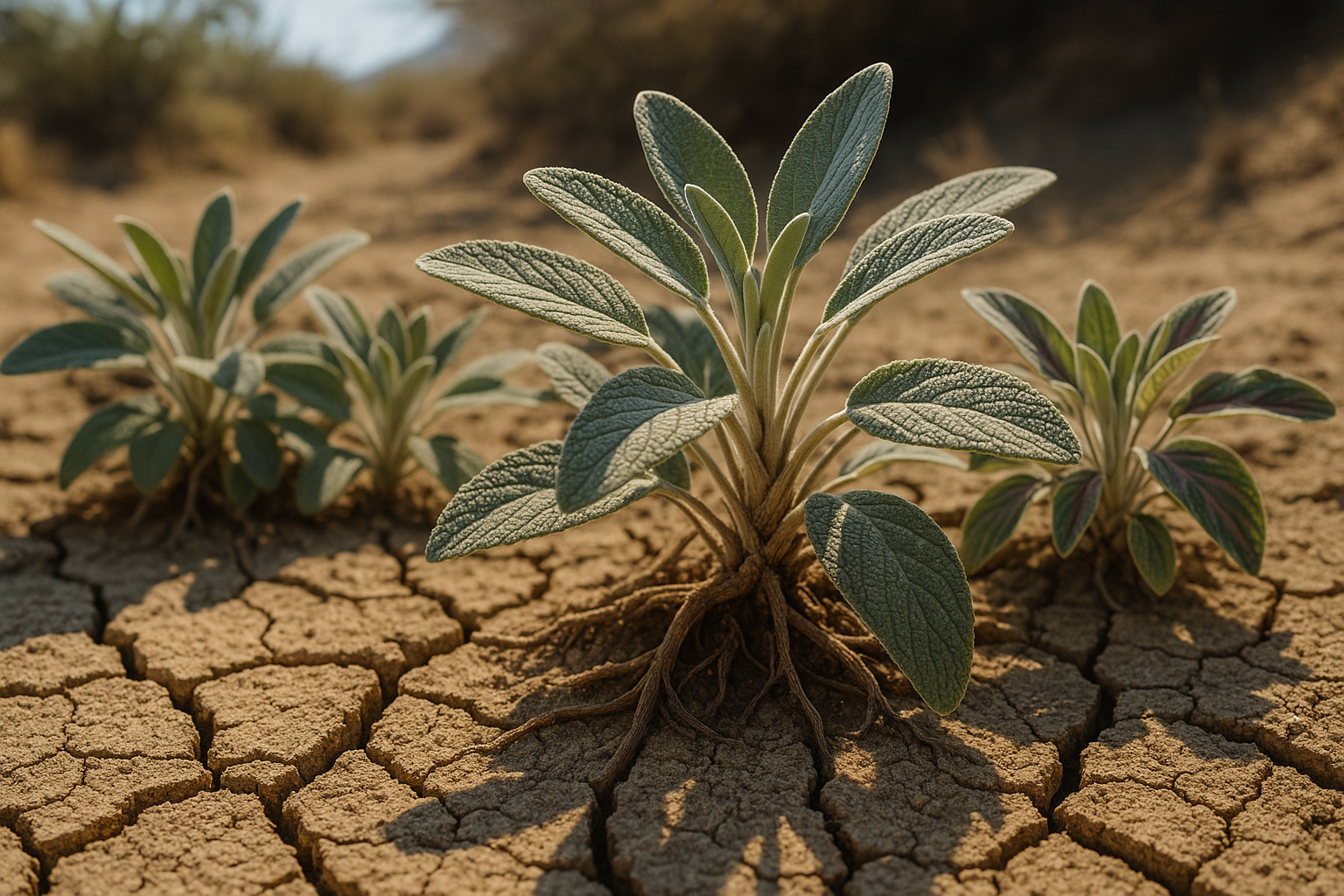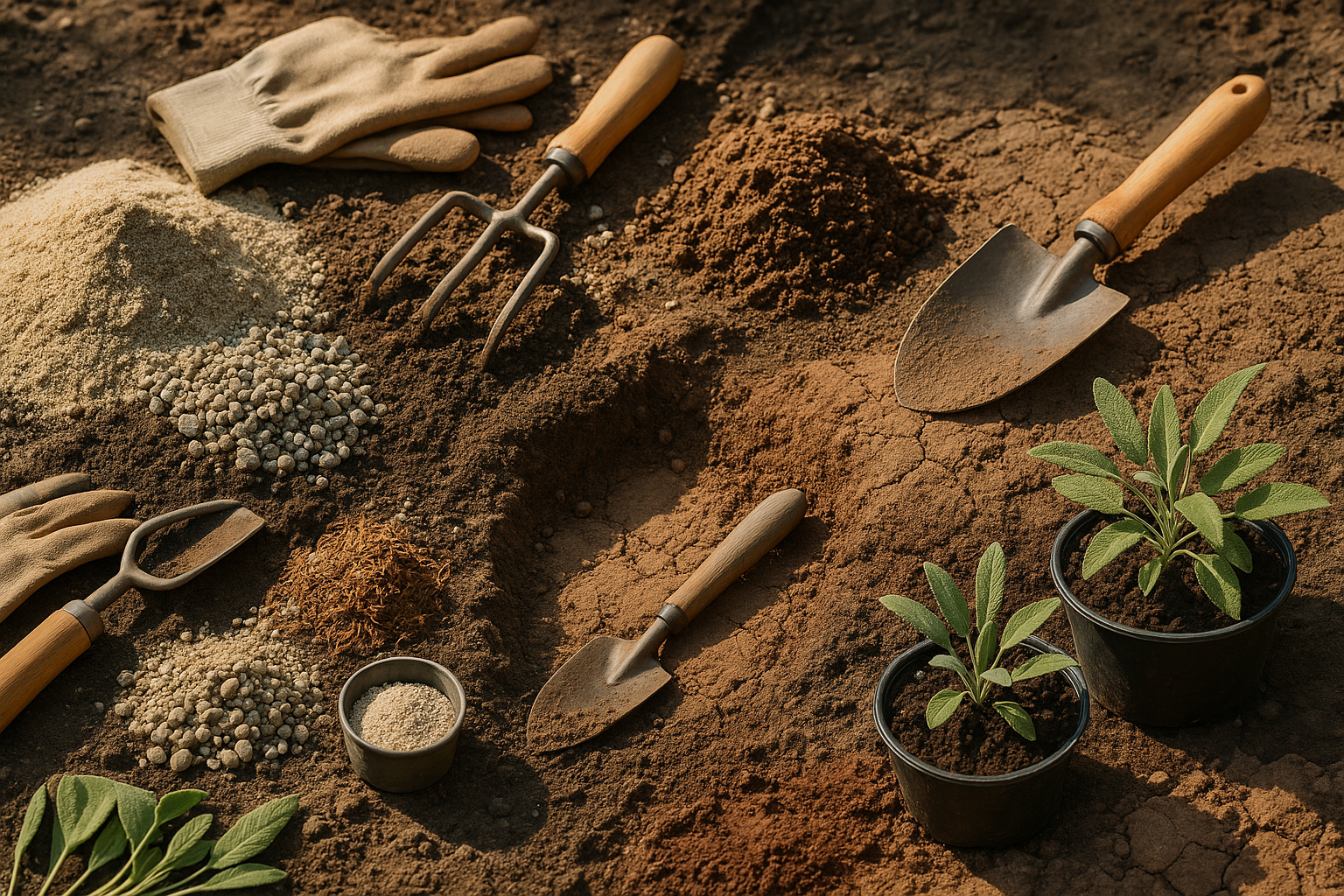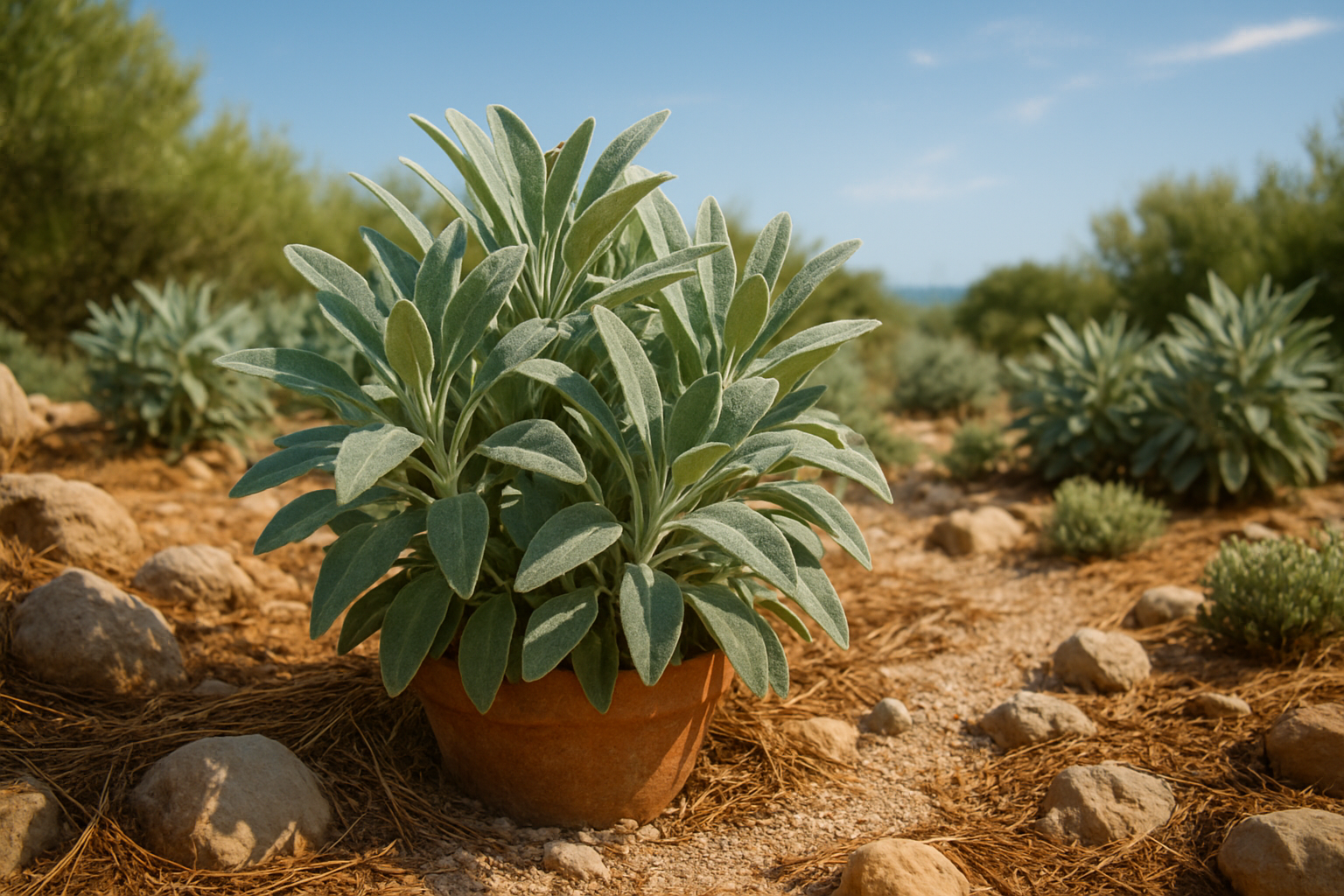Why Sage Thrives in Hot, Dry Climates

Sage, with its roots in the sun-scorched Mediterranean, is naturally adapted to survive and even thrive in hot, dry climates where many other herbs would struggle. This hardy perennial boasts gray-green, velvety leaves that help reflect harsh sunlight and minimize water loss—key traits that make it a superstar for xeriscaping and water-wise gardens.
Unlike basil or cilantro, which wilt quickly without consistent moisture, sage can power through long dry spells thanks to its deep, woody roots that draw moisture from deep within the soil. Gardeners looking to conserve water will appreciate how sage rarely needs supplemental irrigation once established; simply plant it in a well-draining spot with full sun, and it practically takes care of itself.
Sage’s drought resistance also comes from its ability to slow down growth during periods of extreme heat or drought, rather than collapsing or turning bitter like parsley or chives might. These qualities not only make sage a resilient choice for low-maintenance landscapes, but it also continues to deliver aromatic, flavorful leaves even during heatwaves.
For anyone in search of a beautiful, edible plant that can handle the demands of a dry, sunny garden, sage is a tried-and-true winner—offering both sustainability and ease, all while infusing the air with its signature earthy fragrance.
Best Sage Varieties for Dry Regions
When it comes to gardening in hot, dry regions, choosing the right sage varieties can make all the difference in your herb garden’s success. Common sage (Salvia officinalis) is a classic favorite, recognized for its broad, gray-green leaves and robust, earthy aroma. Its thick, slightly fuzzy leaves help it retain moisture and withstand long periods without rain, making it a natural fit for arid climates.
Tricolor sage is another excellent option, boasting eye-catching foliage in shades of green, white, and purple. This variety offers the same drought resilience with an added punch of color, perfect for both culinary and ornamental uses. Golden sage, as its name suggests, features bright golden-green leaves that stand up well to intense sun and heat while lending visual brightness to the garden.
These hardy cultivars are not only drought-tolerant but also less prone to pests and diseases common in humid environments. When selecting nursery plants, look for healthy specimens with compact, well-branched growth and sturdy stems—avoid those with droopy, wilted leaves or signs of stress. If starting from seed, seek out reputable seed companies that specifically label their sage varieties as suitable for dry or Mediterranean climates.
Plant your sage in well-draining soil amended with sand or gravel, and space plants apart to encourage airflow and minimize water competition. With the right sage variety and a bit of care, your garden can thrive even in the hottest, driest summers.
Preparing Soil for Sage Success

For thriving sage plants, choosing the right soil is key. Sage grows best in fast-draining, sandy, or even rocky soils with low fertility, naturally mimicking its Mediterranean origins. If your garden has heavy or clay soil, don’t worry—there are a few simple fixes.
Start by mixing coarse sand or small gravel into the soil to boost drainage. Avoid adding rich compost or manure, as these can trap moisture and increase fertility. If amending your native soil isn’t enough, try growing sage in raised beds or containers, where you can control the mix: use a blend of potting soil with added sand or grit to keep roots healthy.
Too much organic matter or frequent fertilizing can actually backfire, especially in hot, dry climates where sage thrives. Excess nutrients push lush, weak growth that attracts pests and makes the plant more susceptible to root rot from trapped moisture. For best results, give sage “tough love”—poor soils, minimal fertilizer, and sharp drainage will help the plant grow into a fragrant, resilient herb perfect for the kitchen or landscape.
If you’re unsure about your soil, do a quick drainage test: dig a small hole, fill it with water, and see how fast it drains. If it lingers for more than a few hours, amending your soil or switching to containers is a smart move.
Planting and Placement Tips
Sage thrives when planted in a spot that receives full sunlight for at least six hours each day. Choose a location with well-drained, sandy, or loamy soil to avoid root rot, which sage is prone to in soggy ground. Space each sage plant about 18 to 24 inches apart to allow for good airflow, helping prevent fungal issues.
Before planting, enrich the soil with compost and lay down a two-inch layer of organic mulch—like bark, pine needles, or straw—leaving a few inches of gap around the stem for air circulation. Mulching helps retain moisture and suppress weeds, both crucial in hot, dry climates.
For direct seeding, sow sage seeds ¼ inch deep after your region’s last expected frost. Keep the soil consistently moist (but not wet) until seeds germinate, which usually takes 2–3 weeks. Thin seedlings to the recommended spacing once they’re big enough to handle.
Transplanting sage starts is best done in late afternoon or on a cloudy day in early spring or fall—this timing helps minimize transplant shock and heat stress. Water seedlings well before gently removing them from their pots, then plant them at the same depth they grew in the container, firming the soil gently around each root ball.
Water thoroughly after transplanting, then provide consistent but moderate moisture as plants establish. In particularly hot or arid regions, add temporary shade—like a floating row cover—during the hottest part of the day for the first week or two after planting to give new sage plants the best chance at thriving.
Essential Sage Care in High Heat
Caring for sage during high heat requires a thoughtful approach, especially when it comes to watering. Instead of frequent, shallow watering—which encourages roots to stay near the hot soil surface—opt for deep, infrequent watering. This means giving your sage a slow, thorough soak once or twice a week, allowing moisture to reach deeper into the soil where roots can access it longer and stay cool.
Check the top inch of soil and only water when it’s dry. Early morning is the best time to water, as this reduces evaporation and minimizes the risk of fungal issues.
Ongoing care is also key for a thriving, bushy sage plant. Regularly pinch back the growing tips to encourage fuller, more compact growth, and prune away any leggy or straggly stems. Remove spent flowers to redirect energy toward new foliage. These practices not only shape the plant but also improve airflow, making sage less susceptible to pests in hot conditions.
High heat can bring challenges like sun scorch, where leaves turn pale, brown, or crispy. If your plant shows these signs, consider relocating it to an area with some afternoon shade or use lightweight garden fabric as a temporary sun shield. Mulch around the base with organic material, such as straw or shredded bark, to retain soil moisture and moderate ground temperature.
Watch closely for water stress—wilting, dry, or curling leaves are telltale signs that the roots need more moisture. However, avoid overwatering; sage dislikes soggy soil, which can lead to root rot. If the plant appears stressed, water more deeply rather than more often, and adjust mulch as needed to help keep roots cool.
With these practices, sage will stand up to heat waves while staying robust and productive throughout the summer.
Troubleshooting
Growing sage in hot, dry regions comes with unique challenges, but understanding the most common problems will help keep your plant healthy all season.
Fungal Diseases
Fungal diseases like powdery mildew can strike even in dry climates, especially if your sage is crowded or overwatered. Watch for white, powdery patches on the leaves. Organic control methods include pruning for better airflow, avoiding overhead watering, and promptly removing affected foliage.
Spider Mites
Spider mites love heat and dry air, often leaving behind fine webbing and speckled yellow leaves. To combat them, mist your plants regularly, introduce beneficial insects like ladybugs, or wash them off gently with a hose spray.
Heat Stress
Heat stress appears as drooping, scorched, or curling leaves. Mulching with organic material, watering early in the morning, and providing afternoon shade can help your sage cope.
When to Act Quickly
Sage is typically a tough herb and can bounce back if you catch problems early. However, don’t wait if you see widespread yellowing, rapidly shrinking foliage, or brittle stems—these are signs your sage needs urgent attention.
Keep a close eye during prolonged heat waves for sudden changes. Remember, a little intervention can go a long way in helping your sage thrive, even in tough conditions.
Harvesting and Using Sage
Harvesting sage at the right time is key for maximum flavor and a healthy plant. For the best results, cut sage leaves in the morning after the dew has dried but before the midday sun, when essential oils are most concentrated. Use sharp scissors or pruners to snip stems just above a leaf node, which encourages new growth. Avoid taking more than one-third of the plant at once so it can continue thriving.
After harvesting, gently rinse the leaves and pat them dry. For drying, tie small bundles of sage with string and hang them upside down in a well-ventilated, low-humidity area away from direct sunlight—think a pantry or an airy closet. Once the leaves are crisp, strip them from the stems and store them in airtight jars or containers in a cool, dark spot; this preserves both aroma and potency for months.
When you’re ready to use your sage, crumble dried leaves into roasted vegetables, homemade stuffing, or compound butters. Fresh or dried, sage also shines in tea blends to soothe sore throats or in simple infusions for relaxing baths. By following these tips, you’ll enjoy your homegrown sage in both the kitchen and your wellness routine all year long.
